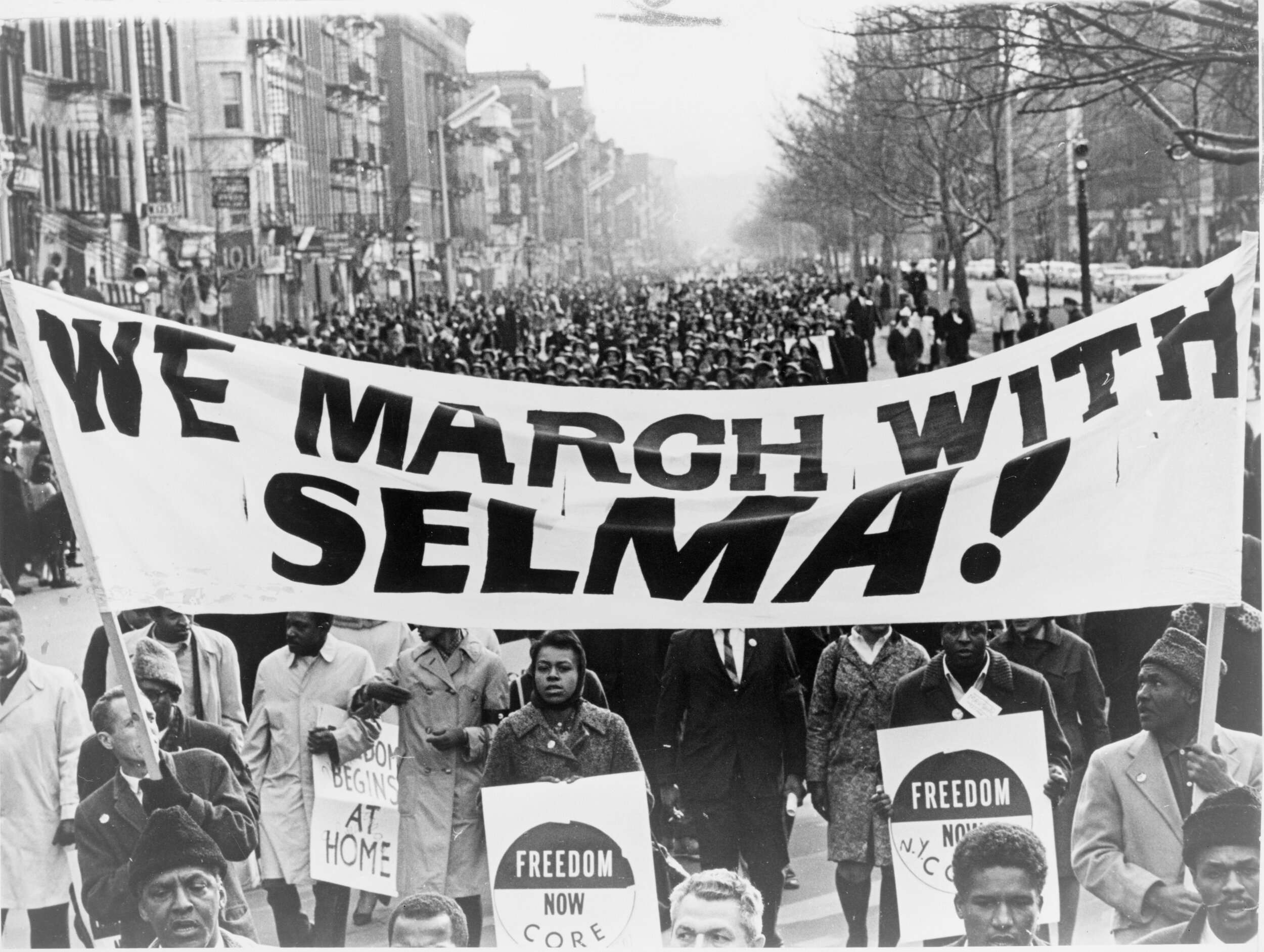Ten Things You Should Know About Selma Before You See the Film
Reading by Emilye Crosby
In Harlem, 15,000 people march in solidarity with the Selma voting rights struggle. Source: World Telegram & Sun photo by Stanley Wolfson, Library of Congress
During the 50th anniversary year of the Selma-to-Montgomery March and the Voting Rights Act it helped inspire, national media focused on the iconic images of “Bloody Sunday,” the words of Dr. Martin Luther King Jr., the interracial marchers, and Pres. Lyndon Johnson signing the Voting Rights Act. This version of history, emphasizing a top-down narrative and isolated events, reinforces the master narrative that civil rights activists describe as “Rosa sat down, Martin stood up, and the white folks came south to save the day.”
But there is a “people’s history” of Selma that we all can learn from — one that is needed especially now. The exclusion of Blacks and other people of color from voting is still a live issue. Sheriff’s deputies may no longer be beating people to keep them from registering to vote, but in 2013 the Supreme Court ruled in Shelby v. Holder that the Justice Department may no longer evaluate laws passed in the former Confederacy for racial bias. And as a new movement emerges, insisting that Black Lives Matter, young people can draw inspiration and wisdom from the courage, imagination, and accomplishments of activists who went before.
Here are 10 points to keep in mind about Selma’s civil rights history.
1. The Selma voting rights campaign started long before the modern Civil Rights Movement.
Mrs. Amelia Boynton Robinson, her husband Samuel William Boynton, and other African American activists founded the Dallas County Voters League (DCVL) in the 1930s. The DCVL became the base for a group of activists who pursued voting rights and economic independence.
2. Selma was one of the communities where the Student Nonviolent Coordinating Committee (SNCC) began organizing in the early 1960s.
In 1963, seasoned activists Colia (Liddell) and Bernard Lafayette came to Selma as field staff for the Student Nonviolent Coordinating Committee (SNCC), known as “Snick.” Founded by the young people who initiated the 1960 sit-in movement, SNCC had moved into Deep South, majority-black communities doing the dangerous work of organizing with local residents around voter registration.
Working with the Boyntons and other DCVL members, the Lafayettes held Citizenship School classes focused on the literacy test required for voter registration and canvassed door-to-door, encouraging African Americans to try to register to vote. Prathia Hall, a SNCC field secretary who came to Selma in the fall of 1963, explained in Hands on the Freedom Plow:
The 1965 Selma Movement could never have happened if SNCC hadn’t been there opening up Selma in 1962 and 1963. The later nationally known movement was the product of more than two years of very careful, very slow work. ■

